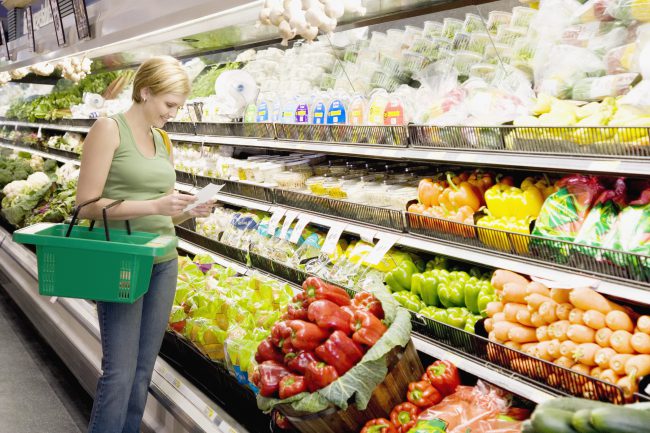Imagine walking into the produce aisle of your local grocery store and being able to look at a digital display, instead of a wrinkly plastic tab, to figure out the price of a head of lettuce.

The prices displayed on the screen would change in real time based on a host of factors including inventory size and shelf life, as well as more complex variables such as the weather, time of day and day of the week.
You may think these elements are already taken into account when grocers set prices, and you’d be right, but artificial intelligence stands to make the entire process of price optimization faster, cheaper and more precise.
Meaning better deals for shoppers, and fatter profit margins for grocers.
READ MORE: Nearly a quarter of Canadians worry about being able to pay for groceries: poll
“It creates the perfect scenario for consumers and for grocers in the pursuit of market equilibrium between supply and demand,” says Sylvain Charlebois, a food distribution expert and dean of the Faculty of Management at Dalhousie University.
Currently, a typical grocery store manager has to make between 1,000 and 1,500 decisions a day, while taking into account customer data and insights, head-office directions and plain instinct, Charlebois says. This means it can sometimes take days or weeks for grocery stores to optimize their prices to sync with fluctuations in demand.

Get daily National news
“Running a grocery store is very complicated, and you’re always just one mistake away from running a loss,” he says.
WATCH: 2017 grocery trends coming to a store near you

In an industry where profit margins are paltry to begin with, grocers need all the help they can get.
“With AI, grocers can set acceptable price ranges for any product, and prices could change by the hour, depending on inventory levels and fluctuations in demand… The window in which to course-correct if an item doesn’t sell could be measured in minutes or hours, rather than in days or months,” Charlebois says.
Grocers would effectively use AI price optimization “to better manage the flow of consumers going into the store.”
READ MORE: Canadian families could spend $1,600 more this year as grocery, gas bills rise
This means consumers would no longer be compelled to go grocery shopping in the morning to get the best prices, while evening shoppers would no longer always find themselves greeted by “uglier versions of produce at a higher price.”
In the long term, unpredictable price fluctuations would become far less frequent, meaning less “sticker shock.”
READ MORE: Grocery giant Loblaw to open 30 new stores, plans to upgrade over 500 others
Canada’s “highly traditionalist” grocery sector has been slow to embrace AI compared to parts of Europe for example, but this is changing slowly but surely, Charlebois says.
“More and more, the food industry is embracing AI, and it’s becoming part of the sector’s DNA from farm to fork.”
He gives it five to 10 years before AI-driven price optimization starts to become commonplace in Canada.
“You’ll probably see digital pricing on shelves where prices can be changed in an instant, in real time, in stores.”
READ MORE: Will you be replaced by a robot? A look at what jobs are going to the bots
The net result is that shoppers will gradually refine their shopping habits to get greater bang for their buck.
“It will actually change when and where you’re shopping in the future. And what you buy.”




Comments